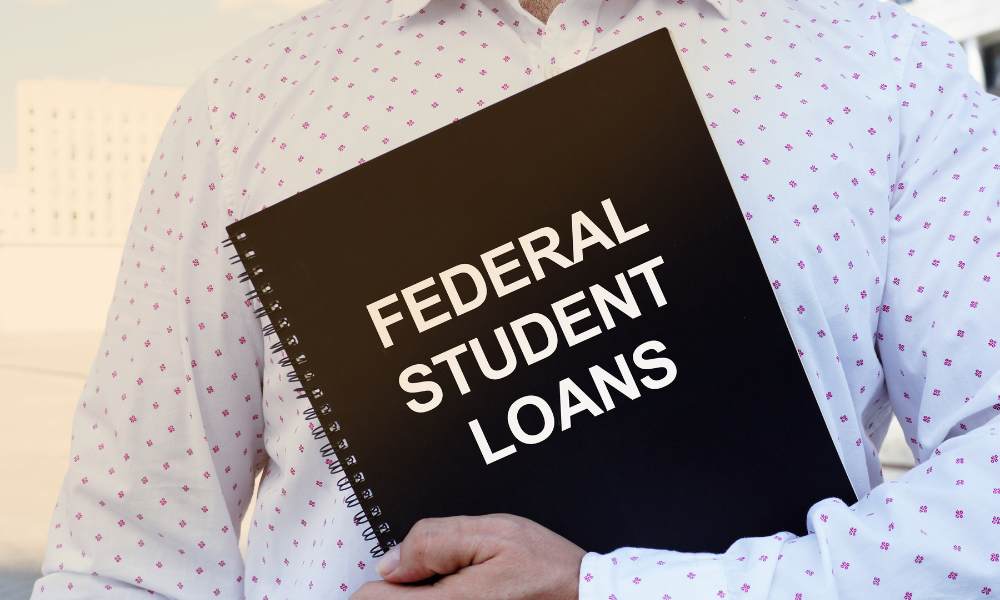
When it comes to financing your higher education, federal student loan programs are often the go-to choice for students in the United States. These programs, administered by the U.S. Department of Education, provide various options to make college more affordable.
In this blog, we will delve into the world of federal student loan programs, exploring the types of loans available, eligibility criteria, interest rates, and more. By the end of this article, you'll have a better understanding of how federal student loans can help you achieve your academic goals. Additionally, we'll address the question: can international students apply for student loans in the USA?
Federal student loan programs are financial aid options offered by the U.S. government to help students and their families cover the cost of higher education. These loans typically offer more favorable terms and conditions compared to private loans, making them a popular choice for many aspiring college students. Let's explore the key federal student loan programs available:
Direct Subsidized Loans are available to undergraduate students with demonstrated financial need. The unique feature of these loans is that the federal government pays the interest on the loan while the borrower is in school at least half-time, during the six-month grace period after leaving school, and during periods of deferment.
Direct Unsubsidized Loans are also available to undergraduate students, but unlike subsidized loans, they are not based on financial need. Interest begins to accrue on these loans as soon as they are disbursed, and borrowers are responsible for paying the interest during all periods.
Direct PLUS Loans are available to graduate students and parents of dependent undergraduate students. These loans are credit-based, and borrowers must undergo a credit check. Direct PLUS Loans can cover any costs not already met by other financial aid.
Direct Consolidation Loans allow borrowers to combine multiple federal loans into one loan. This simplifies repayment by providing a single monthly payment and extending the repayment term. While it can make monthly payments more manageable, it's important to note that extending the repayment term can result in higher overall interest costs.
To access federal student loan programs, you must meet specific eligibility criteria. Here's a general overview of the requirements:
You must be a U.S. citizen, U.S. national, or an eligible non-citizen to qualify for federal student loans. Eligible non-citizens typically include permanent residents and those with refugee or asylum status.
You must be enrolled in a degree or certificate program at an eligible institution to receive federal student loans. The institution you attend should be recognized by the U.S. Department of Education.
To maintain federal student aid eligibility, you must make satisfactory academic progress as defined by your institution. This typically includes meeting minimum GPA and credit completion requirements.
If you have defaulted on a federal student loan in the past, you may not be eligible for additional federal aid until you've made satisfactory repayment arrangements.
Male students between the ages of 18 and 25 must be registered with the Selective Service to receive federal student aid.
Interest rates for federal student loans are generally lower than those for private loans. The interest rates on federal student loans are fixed by Congress and change annually. As of my last knowledge update in September 2021, here are the interest rates for the 2021-2022 academic year:
It's important to note that these rates are subject to change, so it's advisable to check the most up-to-date rates when considering federal student loans.
Repayment of federal student loans typically begins six months after you graduate, leave school, or drop below half-time enrollment. The federal government offers several repayment plans to accommodate different financial situations. These plans include:
Additionally, federal student loans offer forgiveness and loan discharge programs. The Public Service Loan Forgiveness (PSLF) program, for example, forgives the remaining balance on Direct Loans after 120 qualifying payments for borrowers working in public service.
Federal student loan programs play a pivotal role in making higher education accessible and affordable for millions of students in the United States. Understanding the types of federal loans available, eligibility criteria, interest rates, and repayment options is crucial for making informed decisions about financing your education.
Before taking out federal student loans, it's advisable to explore scholarship opportunities, grants, and work-study programs, as these can help reduce the overall cost of education. When considering federal student loans, it's essential to borrow only what you need and to have a clear repayment plan.
As you embark on your academic journey, federal student loans can be a valuable resource to help you achieve your educational goals without compromising your financial stability. Always stay informed about the latest updates and changes in federal student loan programs to make the most of these opportunities.